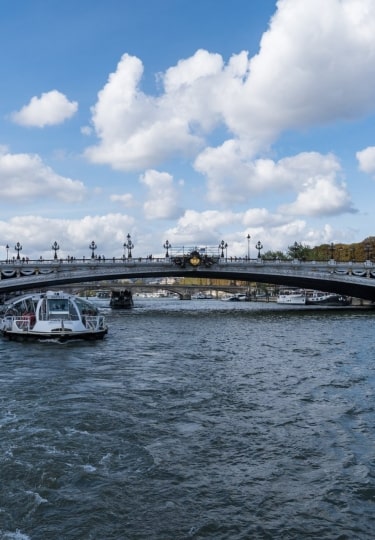One day in Paris is enough to confirm everything you’d hoped was true about the vivacious City of Light. However, whether you arrive in the French capital with a head full of literature, movies and songs, you’ll find your preconceptions overwhelmed by the charisma of Paris in the flesh.
The political and cultural heart of one of Europe’s largest and most influential nations, Paris’ cobbled streets have been polished by an extraordinary history. Its restaurant scene is the envy of the world, its citizens’ sense of style apparently taught in pre-school, and its grand avenues the addresses of enough museums, galleries, and Beaux-Arts edifices to keep a visitor spellbound for days.
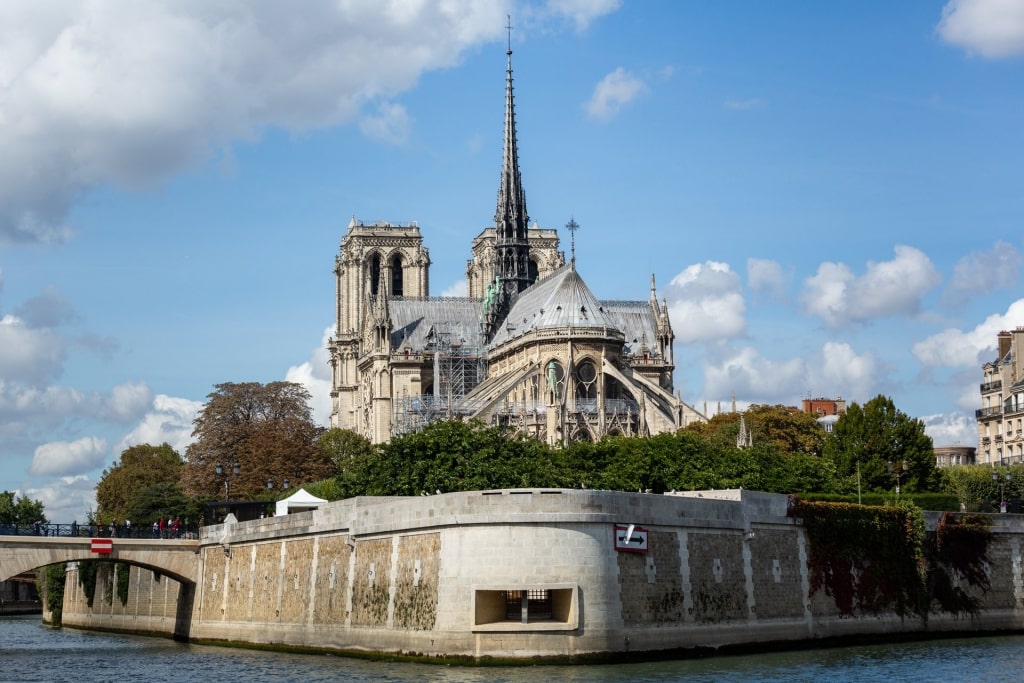
Notre Dame
Orienting yourself around the city involves understanding the spiral distribution of neighborhoods or “arrondissements”. Many of the major sights like the Champs-Élysées, Notre Dame, and the Louvre are confined to the 1st, 4th, and 8th arrondissements, but many other neighborhoods are worth visiting for their unique characters garnished with corner cafés, hip bars, or chic patisseries.
Just as you’re beginning to navigate the arrondissements with success, you’ll find yourself alongside the Seine. The river, which halves the city into the Left and Right Bank, has been designated a UNESCO World Heritage Site thanks to the extraordinary array of notable buildings framing the view. The Seine’s broad, calm presence offers an escape from the urban verve, a chance to breathe and reflect on the innumerable treasures of this historic metropolis.
Read on to learn what to see during one day in Paris.
8 a.m.: Breakfast in Montmartre
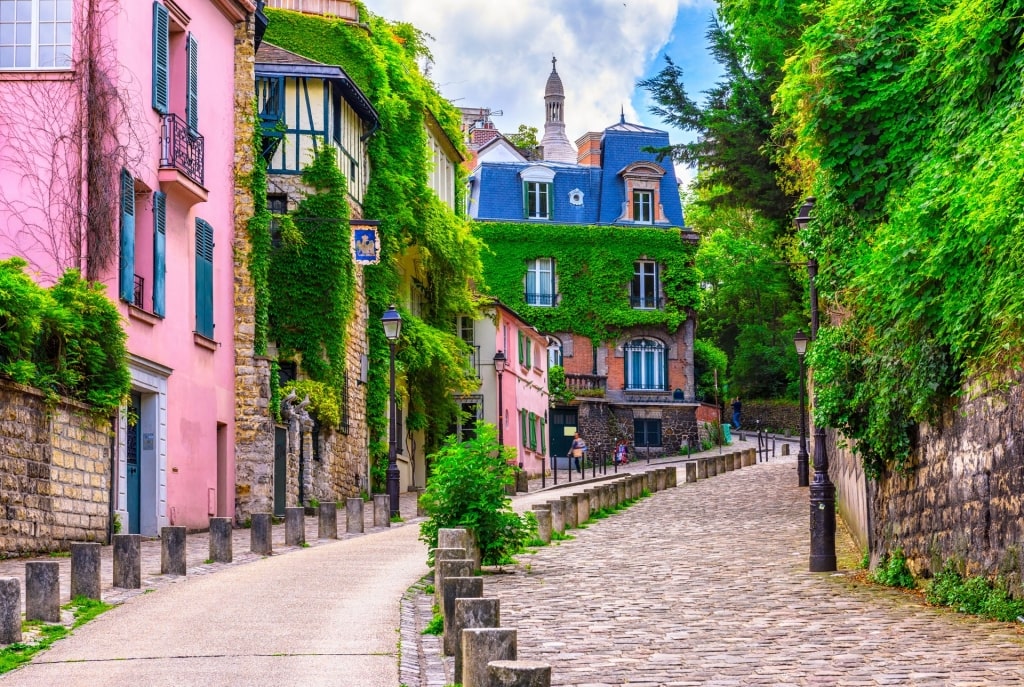
Montmartre
Despite most of the sightseeing action clustered in the central 1st, 4th, and 8th arrondissements, you should make time during your one day in Paris for the 18th.
The neighborhood of Montmartre, once a rustic village on the outskirts of the city, is now a hilly neighborhood with a boho, artistic past echoed in its network of cobbled lanes and bustling squares.
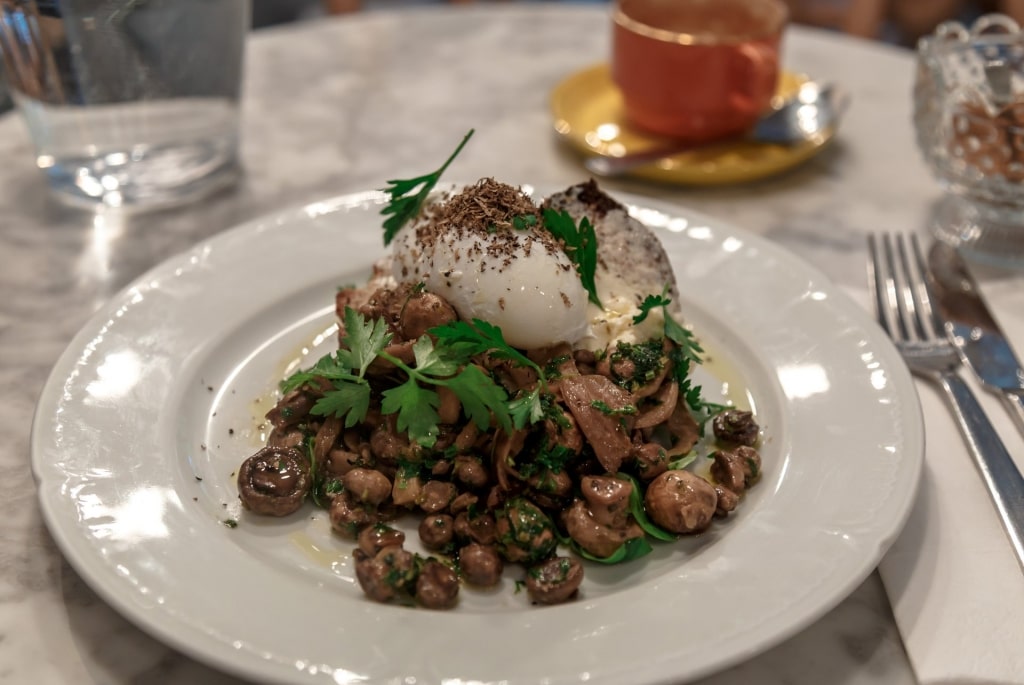
Hardware Société Photo by john.gillespie on Flickr, licensed under CC BY-SA 2.0
Perversely, probably the best breakfast and brunch can be found at an Australian import called Hardware Société, its sharp black awnings found on the eastern flank of the Montmartre butte or hill. This Melbourne institution serves up delectable dishes like crisp fried brioche drizzled with plum powder or indulgent Madagascan Tiger Prawn Benedict.
Rather eat on the hoof? Collect an orange blossom and chocolate babka, or one of the city’s most highly regarded croissants, from artisan bakery Mamiche on rue Condorcet. With your brioche pastry in hand, wander Montmartre’s cobbled lanes passing artists shouldering their easels en route to the panoramas offered at the Sacré-Coeur Basilica.
Breakfast complete, step into the tranquil gardens of the Musée de Montmartre. Formerly the home of Renoir, this gorgeous little museum charts the social history of Montmartre through a permanent collection of paintings. You’ll find a companion museum, but with a contemporary focus, at the Musée d’Art Naïf Max Fourny.
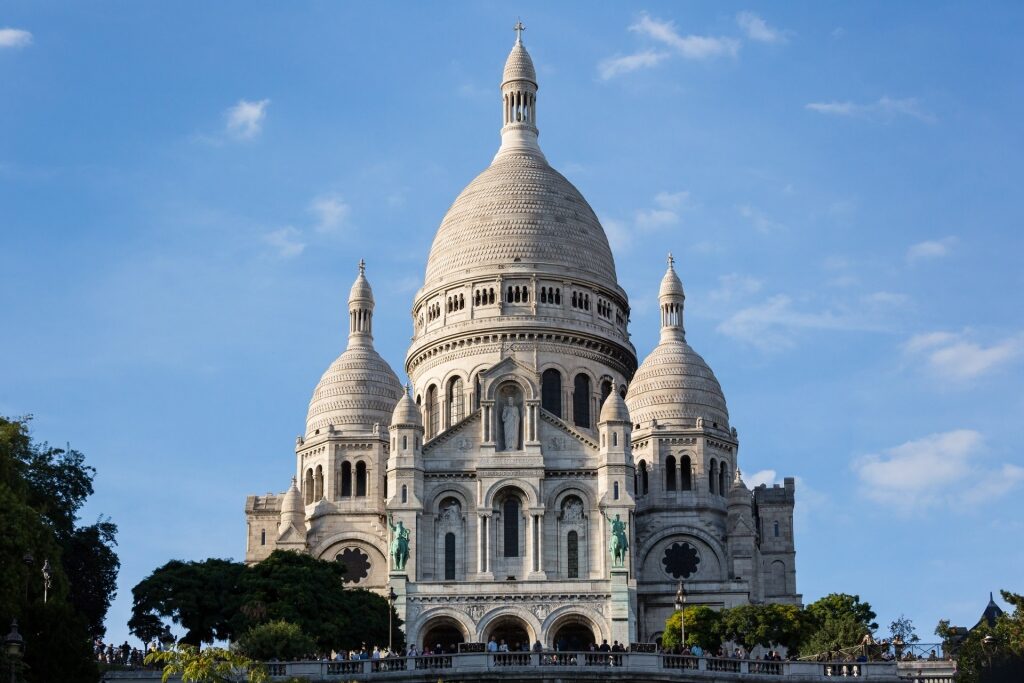
Sacré-Coeur
At some point be sure to find your way to the Place du Tertre. This open-air art market is peak Montmartre; a quintessentially French village square enclosed within handsome 18th-century architecture. In one corner you’ll see the shining white domes of the Sacré-Coeur, the symbol of Montmartre.
Join the throng and ascend the steps up to the snowy walls of Sacré-Coeur. Besides the beautiful Romano-Byzantine basilica, you’ll also find some of the best views in Paris from the city’s second-highest point after the Eiffel Tower.
10 a.m.: Shop Les Champs
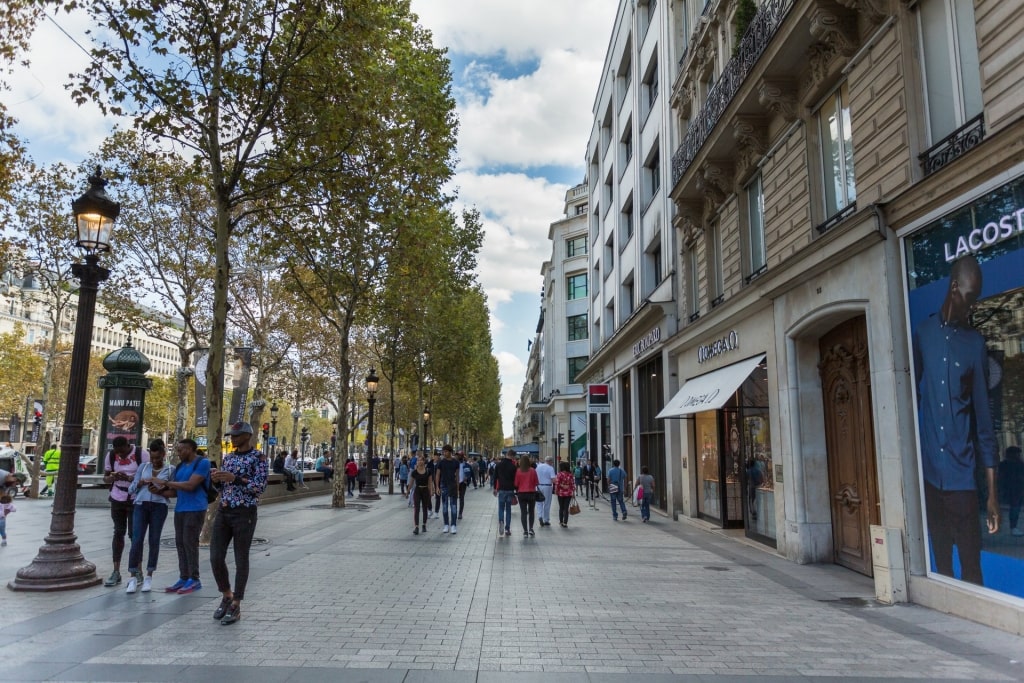
Avenue des Champs-Élysées
Discover why Paris is one of the best shopping cities in Europe at the Avenue des Champs-Élysées, or “Les Champs” as it’s known to the locals. Here, you’ll find just under a mile of stately monuments and flagship stores for major French and international brands.
Limber up for your shopping bonanza with a swift visit to the Arc de Triomphe, presiding over one end of the Les Champs. This symbol of France, constructed over a 30-year period to commemorate the French victory at the Battle of Austerlitz, is more than just a supremely stout triumphal arch. Nearly 300 stairs take you up to one of the finest viewing platforms in the city, with the avenues of Paris radiating outwards from the arch.
On to the shopping that Paris is famous for. Among the many eye-catching windows that line Les Champs are slotted some must-see retail landmarks. The original Art Deco Louis Vuitton store serves up dazzling window displays in its corner spot, while the perfumier Guerlain and macaron maestro Ladurée are worth elbowing your way through the crowds to see.
11:30 a.m.: Be Awed by the Grand Palais
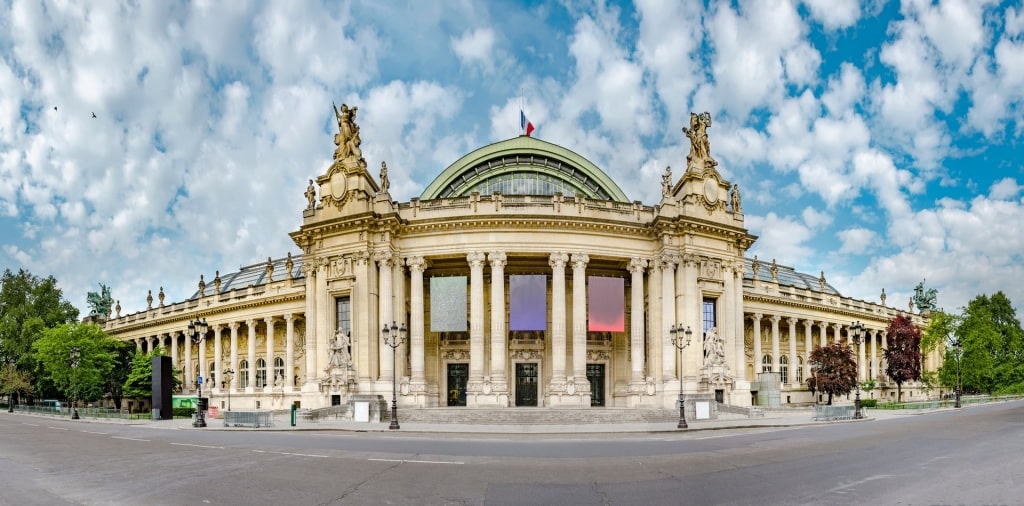
Grand Palais
While strolling amid the magisterial city planning of the 8th, be sure to step into the Art Nouveau auspices of the Grand Palais.
A grand union of steel and glass that’s as breathtaking in its size as it is in its detail, the Grand Palais was originally constructed as a showpiece for the 1900 Universal Exhibition. Following a devastating fire in the 1970s, the building was made a historic monument in 2000 and its baroque flourishes, intricate balustrades, and glass roof—Europe’s largest—were fully restored.
In the museum found within, you’ll learn about the Grand Palais’ use as a military hospital in World War I, later being set up as the headquarters of the city’s resistance when Paris was liberated from the Nazis. Today it’s primarily an event space, its capacious, light-filled interior suitable for everything from Chanel fashion shows to equestrian events.
12 p.m.: Lunch at the Eiffel Tower
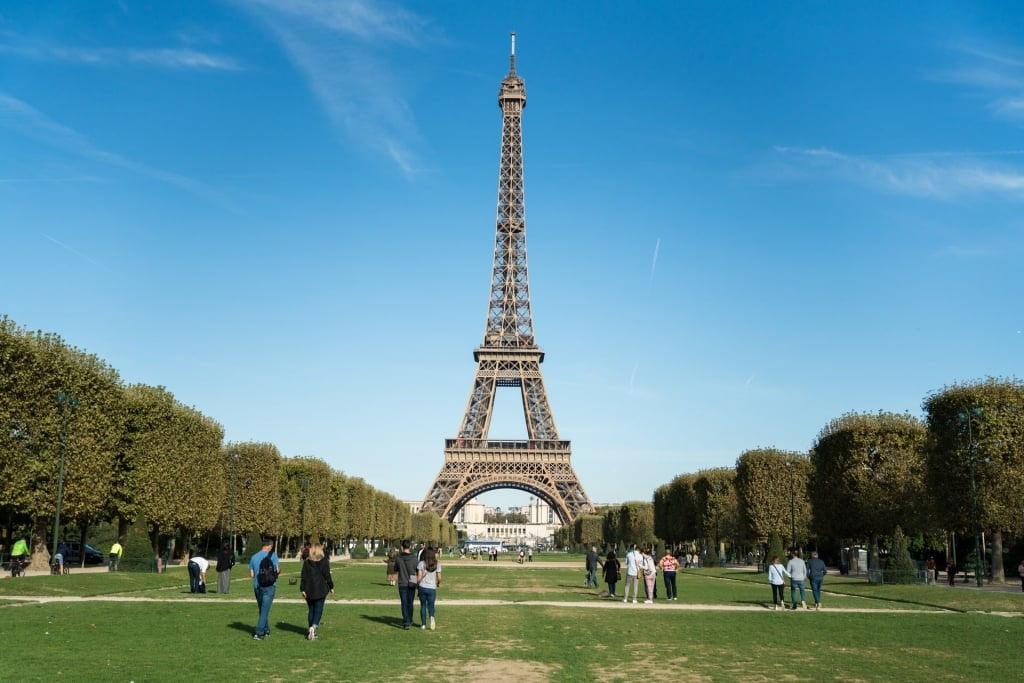
Eiffel Tower
The Eiffel Tower is the emblem of Paris and an unmissable cultural attraction. Its elegant ironwork frame stands unchallenged in the city’s uncluttered skyline as it reaches up to 1,063 feet, slightly higher than London’s Shard, glinting away across the English Channel.
When Gustave Eiffel’s tower was first unveiled in 1889 for the Paris World’s Fair, visitors lined up to experience the sensational views at the top. Little has changed today, except that the tower has become one of the most visited structures on Earth. Pre-planning and advance booking will ensure you reach the top—especially during peak time at dusk—during your one day in Paris.
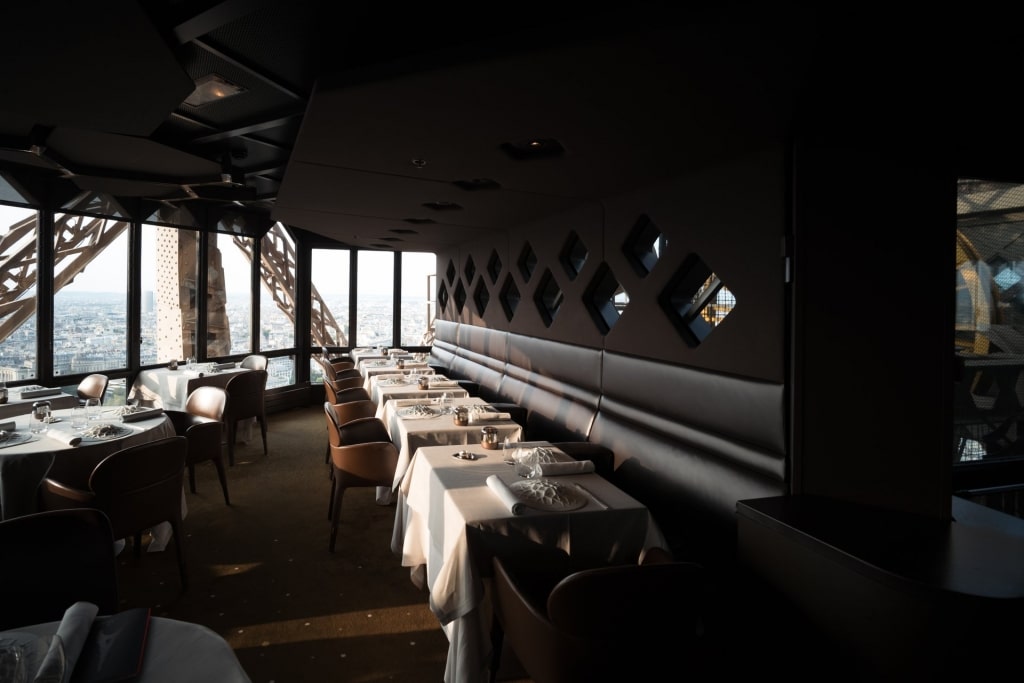
Le Jules Verne Photo by Christopher.Michel on Flickr, licensed under CC BY 2.0
An alternative option is to treat the Eiffel Tower not as a famous landmark in Paris to be conquered, like Everest, but rather as a wildly over-designed lunch spot. Described as a “gustatory dialogue with the Iron Lady”, the one-star Jules Verne restaurant on the tower’s second floor offers tasting menu options crafted by superstar chef Frédéric Anton.
As you sit down in the silver-and-white restaurant, you’ll admire the wrought-iron struts in the foreground of your stellar view while courses of langoustine ravioli and sour apple zephyrs arrive noiselessly on the linen tablecloth.
At the tower’s sinewy feet, you’ll find the expansive Champ de Mars park. Pick up an award-winning baguette and a box of decadent eclairs from Les Gourmandises d’Eiffel, only five minutes’ walk from the park. Throw in a pungent Époisses cheese and, with one of the world’s most extraordinary views before you, you have a picnic to remember.
Read: What Is France Known For?
1:30 p.m.: Marvel at Opulent Versailles
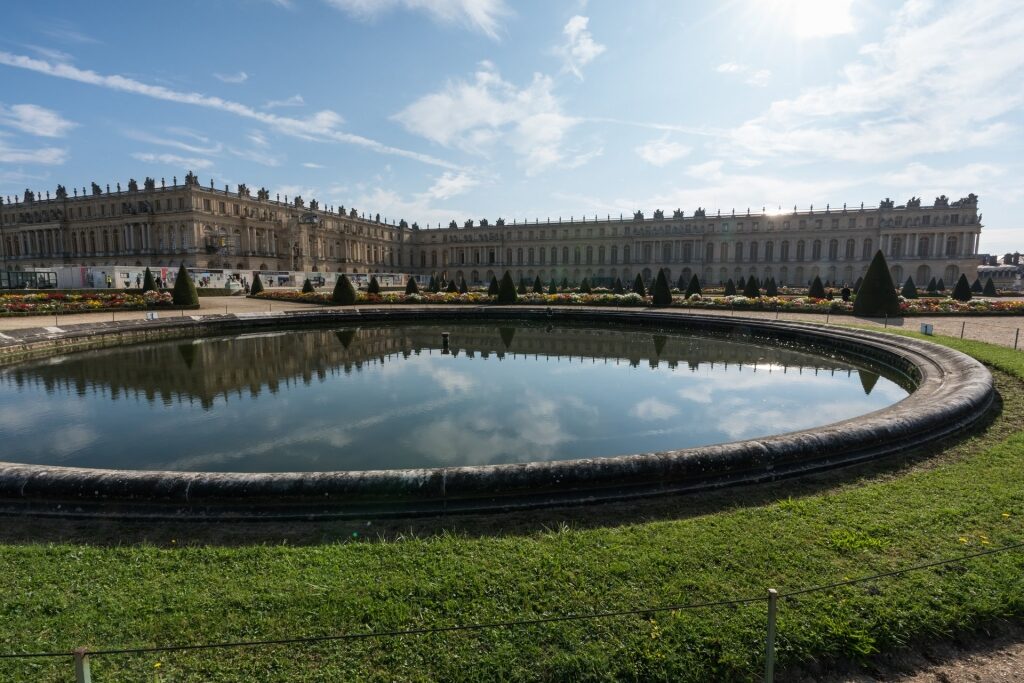
Palace of Versailles
A UNESCO World Heritage Site and France’s second most popular attraction after the Eiffel Tower, the Palace of Versailles was once a glittering satellite in the countryside outside Paris.
Today it’s a sought-after suburb of the city, although the palace and its grounds remain a world apart. A former hunting lodge transformed by King Louis XIV into a statement of dynastic intent, the palace became the center of the Sun King’s court and that of his heirs. Entering the grounds today, it’s easy to imagine Marie Antoinette swanning through the sculpted gardens, the diamonds catching the sunlight in her famously ornate coiffeur.
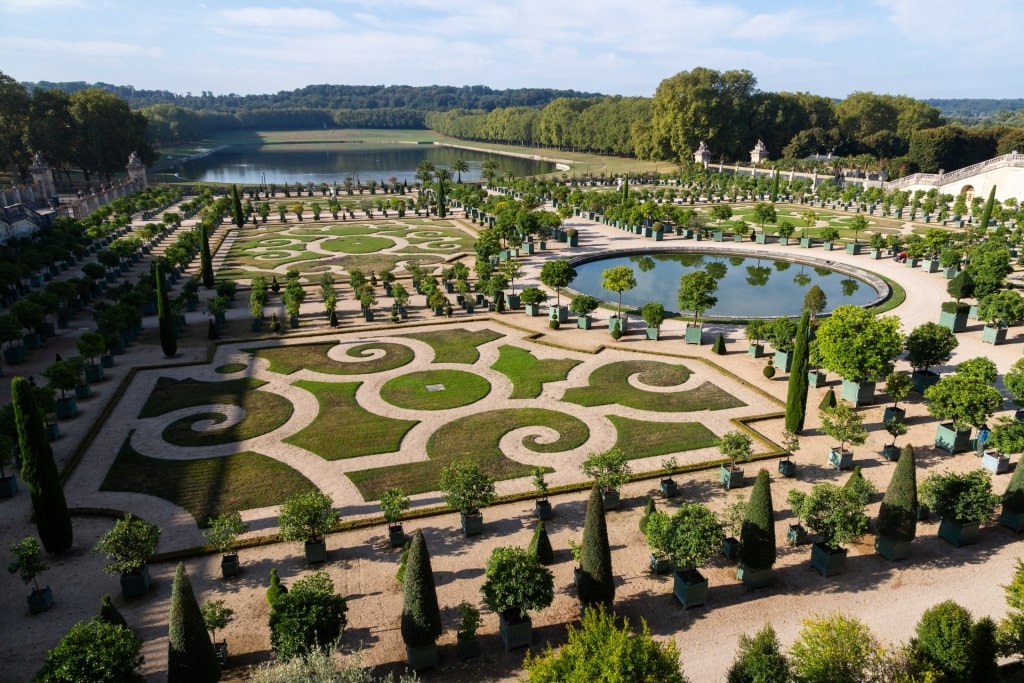
Palace of Versailles
A visit to Versailles could entirely use up your one day in Paris, with more time given over to explore the fountains and canals of the gardens, wander through the Domaine de Trianon where Marie Antoinette spent much of her time, and even go treasure hunting in the many antique shops found in Versailles itself.
If you’re visiting France in the summer, you’ll find a program of special events geared towards making the most of the gardens in all their summer pomp, such as the Saturday Night Fountain Shows.
However, a focused visit to the palace itself will absorb around two to three hours. Among the 2,300 rooms available for you to poke your proletariat head into include Marie Antoinette’s private chambers, the King’s Apartments, and the dazzling Hall of Mirrors, clearly designed to prove that you can never have too much crystal in one place.
4:30 p.m.: Cruise the Seine
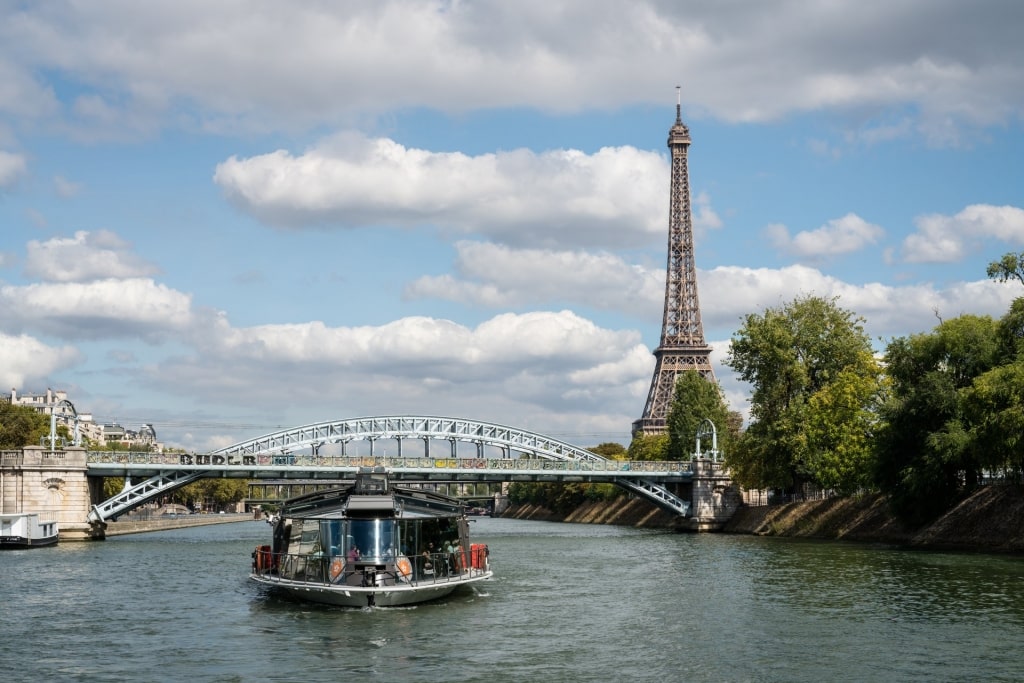
Seine River
The elegant Seine river, its eight-mile swan dive through the city, banded by 37 bridges, is the reason Paris exists. As the city developed outwards from the water, the Seine divided Paris into the Left or bohemian and Right or wealthy Banks. It’s been a major contributor to the city’s water supply throughout history and also a contributor to the cleanliness of the citizens, sometimes concurrently.
The wide river is a wonderful place to escape the city’s hustle and bustle. Along its route, you’ll find its idiosyncratic bridges, from the gilt reliefs of the Pont Alexandre III Bridge to the stoic and longest-standing Pont Neuf. Common sights along its banks include the green stalls of booksellers and the occasional pop-up gallery of riverside artwork.
In the summer, the Paris Plages program opens up the right bank to the populace. You’ll find loungers and parasols, swaying palms, and waterside activities that draw the Parisians away from the hot streets and into the cool, flickering river breezes.
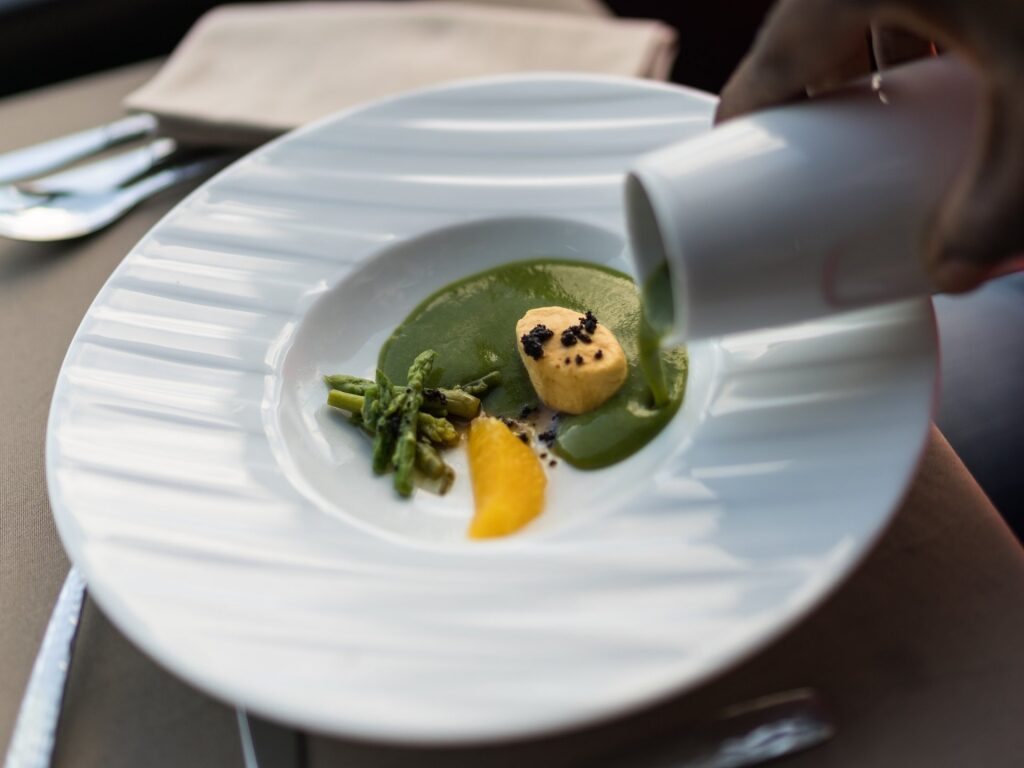
Seine River
Unquestionably the best way to see all that the Seine has to offer is with a cruise, the elegant white prow of your boat slicing smoothly through the silver-green water. Settle down to three courses of French classics paired with wines while the iron street lanterns warm into life along those historic banks.
From your seat, you’ll have a unique perspective on sights including the Louvre, Musée d’Orsay, Palais de Justice, and, of course, the imperious Eiffel Tower, among others.
Read: Best Places to Travel With Friends
6:15 p.m.: Night at the Louvre
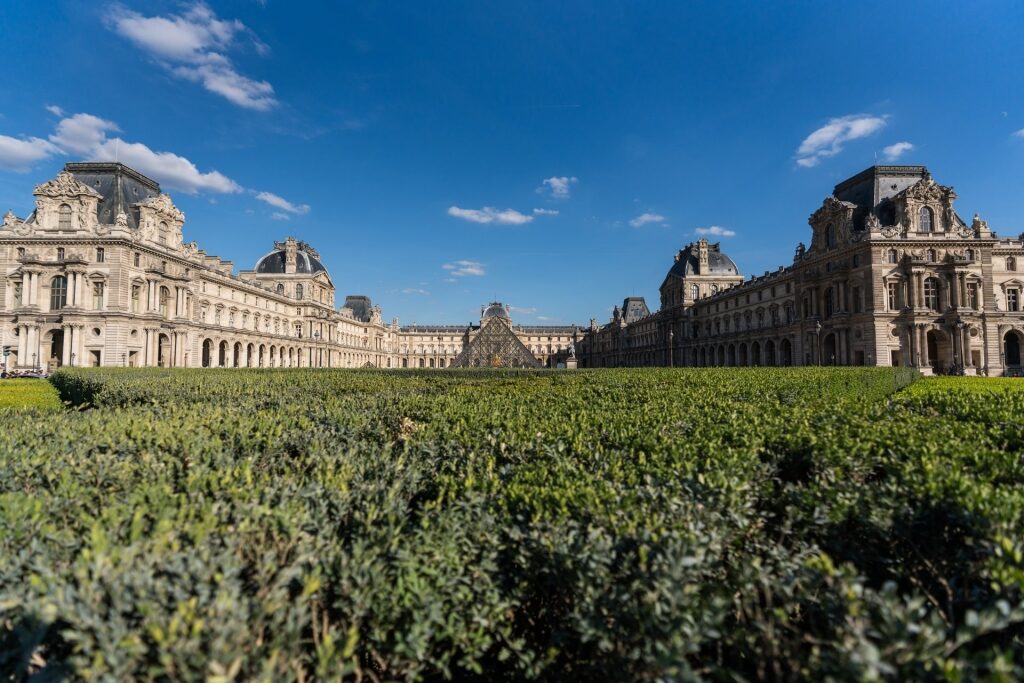
Louvre
The largest and one of the most famous museums in the world, the Louvre can cap off a spectacular one-day Paris itinerary.
Set within what used to be a 12th-century fortress, the Louvre’s combination of the baroque courtyard and architect I. M. Pei’s modern glass pyramid is a work of art in itself. Within the museum’s hallowed halls, you’ll discover 9,000-year-old statues to relatively contemporary treasures such as the dark drama of The Raft of the Medusa.
In the summer, if your timings allow, it’s possible to wander around this fortress of art on Wednesdays and Fridays until 9:45 p.m. Before you enter this French landmark, consider refreshing your artistic taste buds with a wander around the Jardin des Tuileries next door.
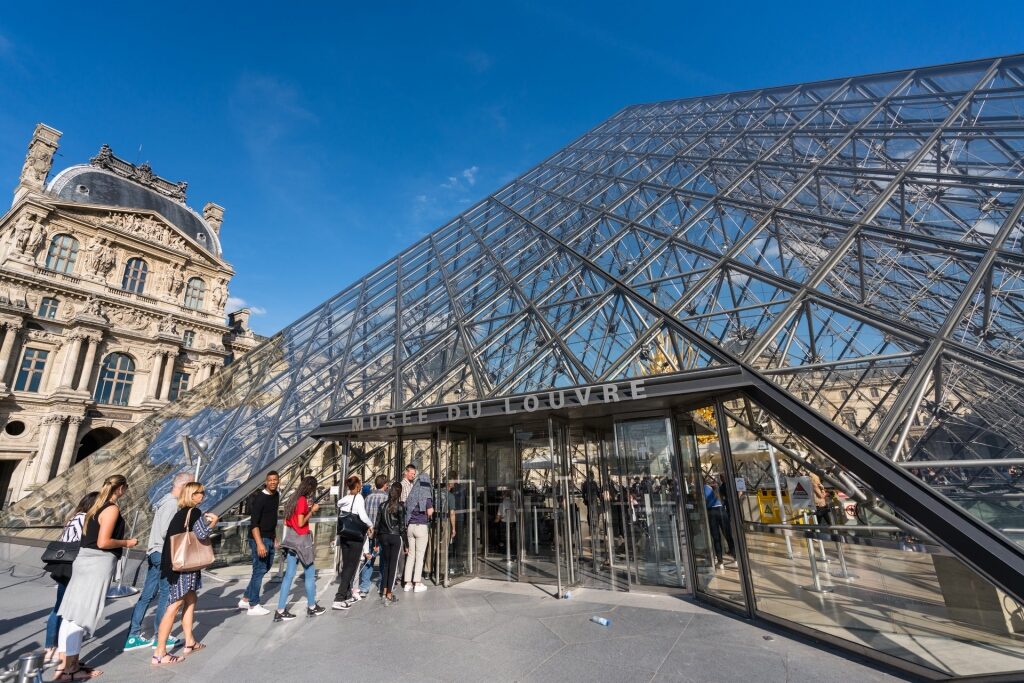
Louvre
The gardens act as an outdoor sculpture park, open until 9 p.m. in the summer. As the sunset ebbs from the sky and the glass pyramid of the adjacent Louvre glows with light, you’ll spot a number of important works such as Auguste Rodin’s The Kiss or, rather more easy to spot in the gloaming, The Handsome Costumed Man by Jean Dubuffet.
Best of all, there’s less of a line for flower-shaped spicy pineapple and yuzu ice creams from beneath the beige awning of the Amorino stall, parked on the edge of the Jardin des Tuileries’ Bassin Octogonal. Dessert savored and concluded, head over to the Louvre for your much less crowded appointment with the jewel of the collection, Leonardo Da Vinci’s Mona Lisa.
Read: Best Things to Do in Paris With Kids
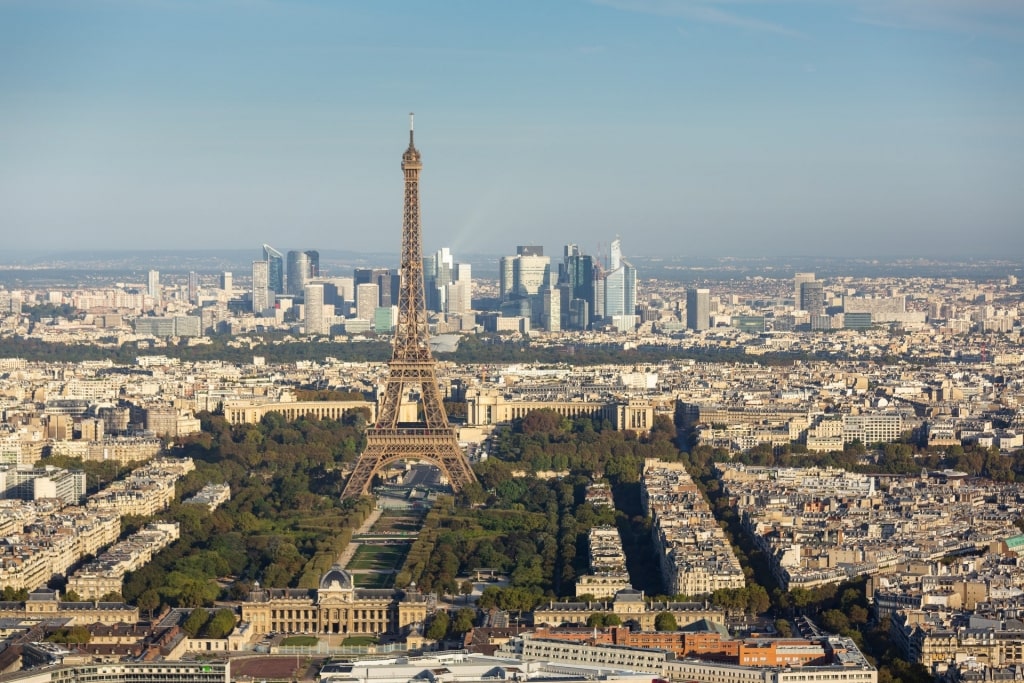
Paris
Experience one day in Paris—and, hopefully, longer—on a cruise to France. From the grand avenues of the City of Light to the glamorous beaches of the Côte D’Azur, France is one of the world’s most enchanting destinations.
Browse our cruise itineraries online and book an incredible vacation to France.
